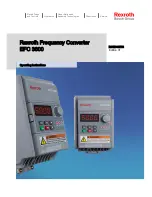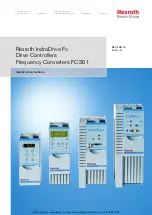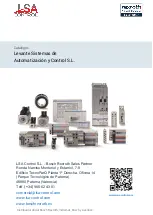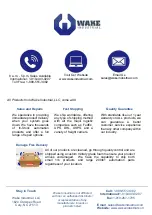
of the machine. This can be difficult for
pumps.
2f
Make a direct ground connection
between the motor and motor load (for
example pump).
3.
Lower the IGBT switching frequency.
4.
Modify the inverter waveform, 60° AVM vs.
SFAVM.
5.
Install a shaft grounding system or use an
isolating coupling.
6.
Apply conductive lubrication.
7.
Use minimum speed settings if possible.
8.
Try to ensure that the mains voltage is balanced
to ground. This can be difficult for IT, TT, TN-CS,
or Grounded leg systems.
9.
Use a dU/dt or sine-wave filter.
3.2.7 Harmonics
Electrical devices with diode rectifiers, such as
•
Fluorescent lights
•
Computers
•
Copiers
•
Fax machines
•
Various laboratory equipment, and
•
Telecommunications systems
can add harmonic distortion to a mains supply. Frequency
converters use a diode bridge input, which can also
contribute to harmonic distortion.
The frequency converter does not draw current uniformly
from the power line. This non-sinusoidal current has
components that are multiples of the fundamental current
frequency. These components are referred to as harmonics.
It is important to control the total harmonic distortion on
the mains supply. Although the harmonic currents do not
directly affect electrical energy consumption, they generate
heat in wiring and transformers. This heat generation can
affect other devices on the same power line.
3.2.7.1 Harmonic Analysis
Various characteristics of a building’s electrical system
determine the exact harmonic contribution of the
frequency converter to the THD of a facility and its ability
to meet IEEE standards. Generalisations about the
harmonic contribution of frequency converters on a
specific facility is difficult. When necessary, perform an
analysis of the system harmonics to determine equipment
effects.
A frequency converter takes up a non-sinusoidal current
from mains, which increases the input current I
RMS
. A non-
sinusoidal current is transformed with a Fourier series
analysis and split up into sine-wave currents with different
frequencies, that is, different harmonic currents I
N
with
50 Hz or 60 Hz as the fundamental frequency.
The harmonics do not affect the power consumption
directly, but increase the heat losses in the installation
(transformer, inductors, cables). So, in power plants with a
high percentage of rectifier load, keep harmonic currents
at a low level to avoid overload of the transformer,
inductors, and cables.
Abbreviation
Description
f
1
Fundamental frequency
I
1
Fundamental current
U
1
Fundamental voltage
I
n
Harmonic currents
U
n
Harmonic voltage
n
Harmonic order
Table 3.9 Harmonics-related Abbreviations
Fundamental
current (I
1
)
Harmonic current (I
n
)
Current
I
1
I
5
I
7
I
11
Frequency
[Hz]
50
250
350
550
Table 3.10 Transformed Non-sinusoidal Current
Current
Harmonic current
I
RMS
I
1
I
5
I
7
I
11-49
Input current
1.0
0.9
0.4
0.2
< 0.1
Table 3.11 Harmonic Currents Compared to the RMS Input
Current
175HA034.10
Illustration 3.3 DC-link Coils
NOTICE
Some of the harmonic currents can disturb communi-
cation equipment connected to the same transformer or
cause resonance with power factor correction capacitors.
To ensure low harmonic currents, the frequency converter
is equipped with passive filters. DC-coils reduce the total
harmonic distortion (THD) to 40%.
The voltage distortion on the mains supply voltage
depends on the size of the harmonic currents multiplied
by the mains impedance for the frequency in question. The
System Integration
Design Guide
MG16G202
Danfoss A/S © 08/2015 All rights reserved.
45
3
3















































